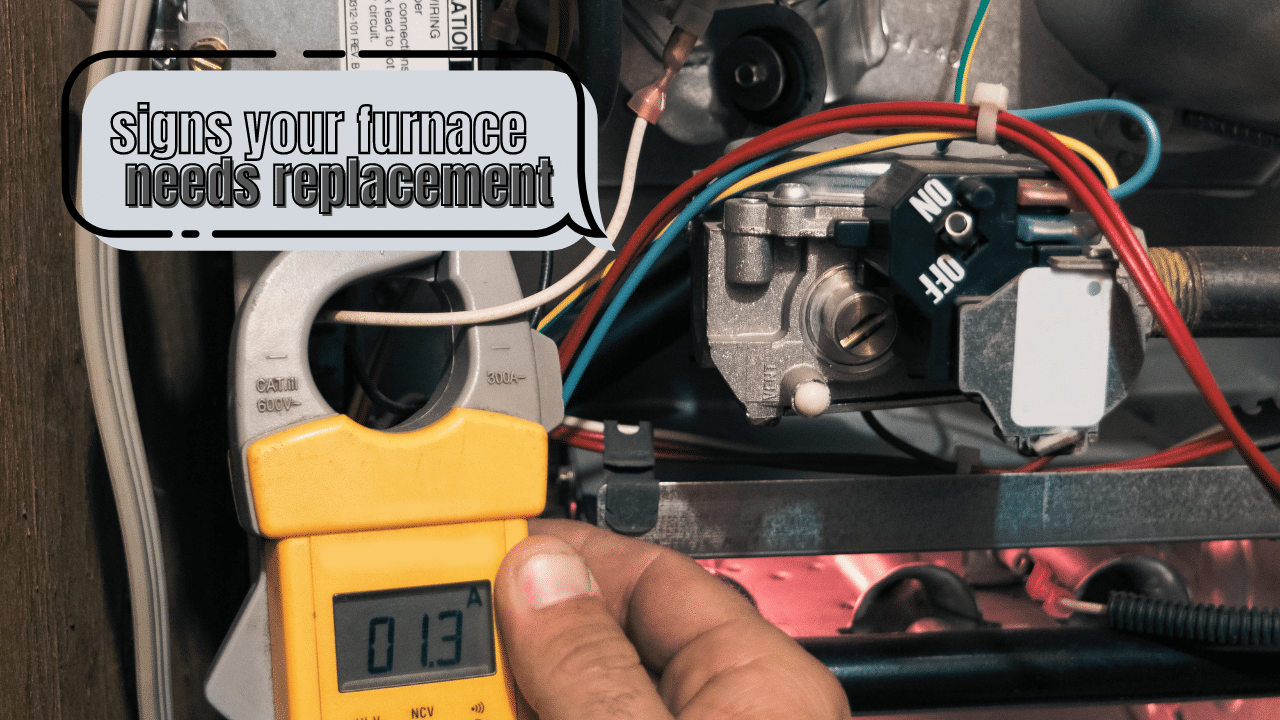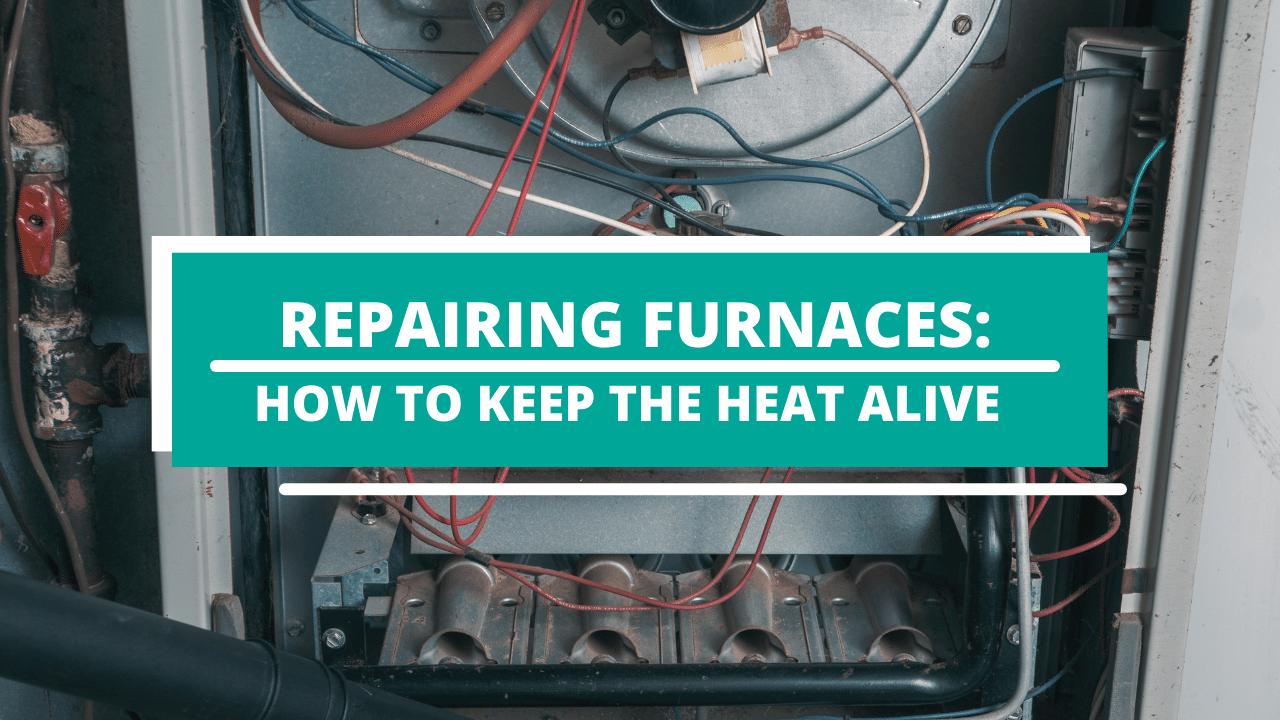Whenever the winter rolls around, every family remembers the value of their faithful furnace. Coming home to a heated household after braving the frozen outdoors makes our adventures elsewhere worthwhile. That warmth allows even the coldest inhabitant to soothe their frigid skin.
The only problem? That relief won’t last forever – and neither will the furnace that provides it. But knowing how long a furnace lasts and ensuring it reaches its predetermined longevity are two separate dilemmas.
If you’re worried that your furnace might not outlast the season, then educate yourself on its functions and features. Learning how to protect these machines and cure the problems that plague them can prolong their lifespans to exponential extents. (Related: How Long Do HVAC Systems Last?)
How Long Does a Furnace Last?
No two furnaces share the exact same lifespan, regardless of their make or model. Even furnaces from the same brand can have flames that last longer or die sooner than others. While there’s no guaranteeing your furnace’s longevity, the type of equipment purchased makes a major impact on its lifespan.
The Lifespan of Gas Furnaces
Professionals estimate that well-made gas furnaces can last anywhere between 15 to 20 years. Their condensed lifespan is offset by mitigated operation costs. While electric furnaces can cost upwards of $838 per year, gas furnaces only amount to $574 annually. For however long they last, gas furnaces warm each space faster than any other type on the market. The heat produced in these machines outdoes the energy generated through electrical coils, keeping your house at a comfortable temperature.
The Lifespan of Electric Furnaces
While their gas counterparts might beat them in heat, electric furnaces can double their competitor’s lifespan. Electric furnaces can survive for 20 to 30 years, turning a momentary investment into long-term savings.
However, that longevity comes with a flipside. Electric furnaces cost more to operate on the daily, upping your electricity bill to undesirable heights. Their installation fee – which averages out to about $3,500 – still sits below gas furnace fees.
Extending Your Furnace’s Lifespan
No matter which type of furnace you own, all models benefit from consistent upkeep. Diligently repairing your furnace helps extend its lifespan even beyond the predicted maximum. To ensure you get the most out of your furnace, keep up to date with mandated annual repairs. Hiring a furnace technician to come out and inspect your product once a year ensures that everything’s up to snuff. The best time to do so is in autumn, right before your furnace comes back on for the colder months.
No matter how long or how little your furnace lasts, each comes packaged with warranties to buffer repairs and replacements. Industry standards mandate a ten-year minimum on all warranties, but certain providers may offer extended deals.
That decade milestone in your furnace’s life should cue you to seek out an eventual upgrade. Up until then, the warranty should cover any premature failures.
What Affects a Furnace’s Lifespan?
While each furnace has an inherent lifespan, no equipment lasts unbruised until the end. Any number of factors can create obstacles to its longevity or inhibit its overall health. Preventing these problems ensures you make the most of your purchase.
The Size of the Furnace
The size of a furnace determines how much heat it can distribute in a given area. That given area, likewise, determines how much heat it needs. These two can form either a complementary or adverse relationship. If a furnace is too small for the space it needs to heat, then it will overwork itself to produce heat. That additional energy and time spent in action will drain the furnace of its permanent output day by day.
You might then assume that buying the biggest furnace possible would be the key to preventing this. However, buying a furnace too big for your given space will cause it to activate more often, achieving the same end result. The only right measurement for your furnace is the one that’s equivalent to its surroundings. The furnace’s AFUE – or annual fuel utilization efficiency – can provide an estimate of how much heat any given machine produces. However, that alone cannot determine whether the amount of heat produced can satisfy a specific space.
To get the proper size for your furnace, don’t rely on instinct. Hire a professional heating technician to measure the size of your space and make an educated suggestion thereafter.

Lack of Routine Maintenance
Hiring an inspector to determine the furnace’s condition is like taking oneself to the doctor for a check-up. These appointments help us determine if anything has gone haywire with our health since our last visit. If there is a problem, the professional can provide a solution to fix it.
Without consistent inspections, problems could persist inside of furnaces for years without notice. Not only do these unseen issues contaminate your air, but they wear on the furnace itself.
Maintenance can verify the most common symptoms plaguing furnaces, including dirty air filters, and leaking ductwork. Problems like these cause the furnace to work inefficiently, burning itself out all the sooner. Thankfully, these same inspectors can provide solutions that either you or they can perform to salvage your machine.
The Insulation of the House
Everyone appreciates having their home stay consistently heated throughout the chilliest seasons. Your furnace holds the same appreciation, as the less work it does, the longer it lasts. To keep it happy, there’s one simple trick we can do: insulating our windows.
Insulating a household’s windows helps keep the heat inside and prevents warmth from escaping as soon as it enters. The method of doing so is simple: purchase insulation film and apply one strip across each window surface. Using caulk to seal up any cracks prevents even a single ounce of warm air from slipping out. This insulation can prevent up to 55% of heat loss, which equates to less spent on utility bills each month. Ask yourself: is a 30% decrease to your heating bills worth the temporary price of purchasing insulation?
It’s not just a relief to your wallet – your furnace will be thankful, too. Insulation requires the furnace to function less often, reducing the overall wear on the unit.
Temperature Settings
As the furnace helps to regulate the atmosphere of an area, there’s a safe range of temperatures that it’s programmed to maintain. Any drastic shifts outside of this radius can cause the system to malfunction.
Whether you prefer a blazing hot or freezing cold home, always keep your thermostat set between 60º F and 80º F. This ensures the furnace will work as designed without overextending itself in either direction.
Other Appliances
Furnaces don’t function alone, but as part of a team that delivers the heat to you anywhere in the house. Whether this other equipment works as planned can affect the efficacy of your furnace.
Take, for example, the ducts. Heat from the furnace travels through the ducts in order to deliver heat throughout the house. But if these ducts are sealed off, leaking, or incorrectly-sized, less heat that left the furnace reaches its destination. Fuel lines can hamper furnaces all the same, when installed improperly or when they experience malfunctions. Reading the gas valve can help determine whether the fuel line’s pressure is maintaining equilibrium.
If the pressure is too low, condensation will build up inside of the fuel lines and furnace. This can cause any affected parts to require immediate replacement due to corrosion. Conversely, high pressure levels increase the chance of furnaces overheating. With over 48,000 fires caused by faulty heating equipment per year, keeping an eye on the pressure can prevent any damage.

Signs your Furnace needs Replacement
Just as no two furnaces last the same amount of time, no two furnaces show the exact same signs of distress either. However, there are problems that commonly ail aging or defective furnaces which you ought to watch out for.
It’s best to remember that the existence of one or more of these symptoms don’t mean a replacement is necessary. Be sure to speak with a furnace technician first before making a snap judgment.
Frequent and Expensive Repairs
Has the mechanic come out so often they know your name? The constant service calls indicate that your furnace is likely on its way to its immediate demise. While external factors can cause an irregular service call, more than one repair per year should raise your alarm.
Uneven or Inconsistent Temperatures
Regardless of what temperature you set the thermostat to, not every piece of equipment can keep up. Furnaces can only do so much before giving into factors beyond their control. While this can cause the occasional unusually chilly night, constant irregularities should catch your attention.
If you notice the furnace not reaching high enough levels of heat, check the physical unit. Should you find cold air blowing out of it, replace any dirtied air filters that could inhibit the heat. Continued issues mean the furnace can no longer keep up with producing enough warmth to fill the building.
Unusual Sounds
While every furnace makes noise whenever it turns on or off, not every sound means it’s functioning properly. Rattles, pops, and clicks should notify you that something is amiss inside the machine.
Hear a rattling noise? Check that nothing has come loose in the ducts or in the equipment itself. Securing anything unstable should stop the sound, unless the furnace can no longer stabilize itself overall. Popping noises could come from the constant shifting between parts that control temperature outputs. If this comes combined with the climate regulation issues, seek a replacement furnace altogether.
Do you hear a consistent clicking sound? That indicates that the flame sensor or ignitor can’t light enough flames to fuel the furnace. This issue can be separate from any overarching problems or be indicative of the furnace’s overall state.
Increased Energy Bills
The only constant aspect of bills is the inconsistency of their pricing. While minor fluctuations ought to be expected, significant changes in your bill should draw notice.
The average gas bill of an American household amounts to $63.34 per month. Should your bills double or triple that amount, call an inspector to see whether the furnace is the culprit.

